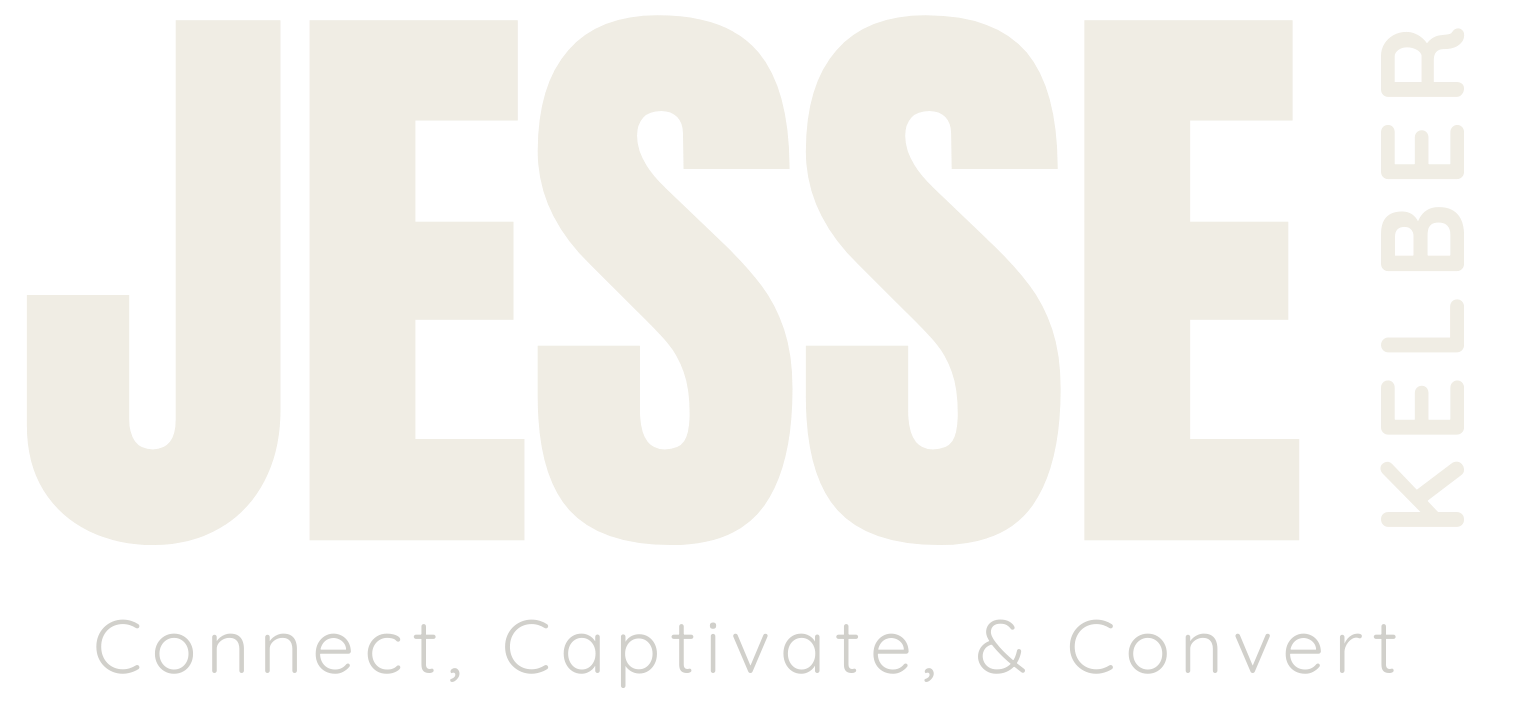Writing About Tech Without Falling Headfirst into a pile of Hyperbole: A How-To Guide

Tips from a professional B2B editorial content writer on how to talk about emerging tech without falling into the hyperbole trap.
Content Strategy For Non-Writers: A Crash Course

You know you need to start turning out some great content. You also know you’re going to need a solid strategy behind that content so it’s not just a random post, mixed with unrelated social posts, then wrapped a cozy blanket of zero clicks and even fewer conversions. What’s a person to do, right? Well, for starters, you could take a step back and realize how silly that sounds. But then you could set about creating your very own content strategy to ensure you create pieces that hit your audience right in the feels. And by feels, of course, I mean pain points. “But Jesse,” I can hear you muttering under your breath, “I have zero background in content marketing, or marketing in general for that matter, let alone writing, and wouldn’t even know where to start.” Let’s do this. 1. Identify your target audience I know, I know, this is really marketing 101-level stuff. But hear me out—if you don’t know who you’re talking to, how will you know what to say? Only by doing at least a rudimentary level of audience research will you start to come to terms with, well, what terms to use, what jargon to avoid, and what pain points to address. Create buyer personas. By thinking through their specific challenges and pain points, figuring out what questions they would ask about your product, and where they spend their time online, you will start to see your audience as the individuals they are. Get to know your audience. Once you know who you’re aiming at, go out and meet some of them. Put the word out through your network, post about it on social media, whatever means you have to compile a list of potential audience members…do it. Then ask questions and, crucially, listen to the answers. 2. Define your content goals Why are you doing this in the first place? Now’s the time to work it out before you get too deep in the weeds of writing pieces that might be properly targeted but lack real substance. If you’re going to wow your audience with your deep industry knowledge, you have to have somewhere to point them. Do you want clicks? Do you want demo bookings? Now’s the time to work that out. Decide on a short list (3-5 max) of goals for your content program. If you’re looking to build general brand awareness, you’ll be writing very different articles than if you’re aiming to generate direct leads. The more specific the goals, the better you can hone your writing to help achieve them. Make sure your goals are SMART. Again, marketing 101 stuff here, but it applies directly to creating a content strategy that can move the proverbial needle. Specific, Measurable, Achievable, Relevant, and Time-bound goals will help more than nebulous ideas. Instead of “drive new client demo calls,” go with “increase demos by 20% in Q2.” 3. Focus on quality content that directly answers audience questions Remember those audience research interviews you conducted? Here’s where they come into play, as you’re going to use the exact questions they asked to power your content. If 7 out of 10 asked a form of the question, “How can AI help my company survive a wild market swing?” and your product is an AI-powered dashboard that identifies coming market swings with predictive analytics, you’re pretty well situated to answer that question, aren’t you? Create content that genuinely helps people solve problems. The problem is market swings, the solution is using predictive analytics. Nowhere in there do you talk directly about your widget, not yet anyway. Consider using the “pillar and cluster” approach to content design. The pillar refers to deep dives into the major topics you identified in your audience research as affecting your audience, while the clusters focus on more tangential, yet related, content pieces. “AI in the warehousing industry” would be your pillar, while “Algorithms for predicting shelf space needs” would be a piece of cluster content. 4. Create a simple editorial calendar to track your content This is my actual calendar for the Strategic Narratives blog. You can see how bare-bones it is, and that’s how it should be at this early stage. You’re looking to track what content goes out when, and where it’s posted. I’m not on social media, so I only have a column to track when I repost a piece to LinkedIn (which I clearly need to update). You make adjustments and additions for whatever platforms your research showed that your audience uses. Develop a simple calendar. At this stage, it needs to include the piece (maybe linked to a draft file), where it’s posted, when it was published, what the CTA is (if any), and who’s responsible for it. Tweak as needed. Start small. There’s no need for a complex or multi-tool process here. A simple spreadsheet like the one pictured above is all you need for now. You can always expand as you scale up your content program down the road. Consistency is far more crucial than volume at this stage. 5. Measure what matters with simple metrics I know, I literally just said consistency matters more than volume, so maybe don’t measure that one just yet. You do need to have a select number of metrics that matter to follow so you can get a handle on what’s working and what’s not. Set up basic analytics. Start with the basics and keep it simple for now. Traffic flows, time spent on page, social shares, and conversion rates will tell you what you need to know for the time being. Regularly review your collected metrics. Yep, here’s that consistency thing again. Not only should you be posting regularly, you should be tracking those posts’ performance regularly, too. This is how you know when and how to iterate and keep your audience engaged. The best content strategy is the one that mixes consistency, reliability, and sustainability. Focus on those three aspects of the above five steps,
5 Counter-Intuitive Questions Every Startup Founder Should Ask Before Writing Their First (or Fortieth) Blog Post

There’s a condition that gets little media attention but is rampant in online writing: Blinking Cursor Syndrome. It has a slightly less common subtype I call Blank Page Overload. This condition is especially prevalent among those who need to write online but who don’t have a background in, or training specific to, writing as a discipline. In my ongoing attempt to rid my clients of such scourges and to enable them to write to their heart’s content, today I offer a selection of my favorite slightly off-base questions you can ask yourself should you find yourself staring down the dreaded Blinking Cursor of Doom or even the Blank Page of Discontent. “What’s one contrarian thing I believe about my industry that no one else is willing to admit?” This one’s not so much about the writing directly, it’s more about forcing yourself to think about what you do from a different perspective. (Ed note: I’m a massive proponent of forcing yourself outside your comfort zone when it comes to “conventional wisdom,” as I find it all too often to be neither) The idea behind asking yourself this question is to push yourself to identify a unique insight or belief that your audience will benefit from understanding. It can be something that challenges the status quo in your industry, or something more specific to the way your product works its magic. The point is to show off your expertise in a way that also positions you as the thought leader to watch. Examples: “Most cybersecurity startups focus on selling fear, but I believe educating users on simple, proactive habits is a more realistic way to generate sustainable risk mitigation behaviors.” “In fintech, the current obsession with AI-this and automated-that is leading to people overlooking the value of human expertise in managing complex scenarios.” “If I had to convince someone of the opposite of what I believe about my product, what would I say?” This one’s all about critical thinking. If you can plan ahead and know what objections your audience is likely to raise, you can have your rebuttal ready to go. Crafting compelling, nuanced content that pre-addresses skeptics shows that not only do you know your stuff, you know your audience—maybe a little better than they do. Examples: “Our SaaS platform might be too complex for small businesses and better suited for enterprises with dedicated IT teams.” “The wellness tech market is oversaturated, and many apps don’t actually improve mental health—they just add to screen time.” “Which failure or mistake in my startup journey could be a valuable lesson for others, and how can I tell that story?” Nothing builds trust like transparency, especially when it shows your human side. Many people in your audience probably have a skewed view of what a tech founder is like, behind the curtains, so to speak. Putting your foibles (the ones that relate to your business, that is, TMI is real, folks) on display for others to learn from can go a long way toward building trust and authenticity. Examples: “We launched before validating the core problem with real customers, which cost us months of re-development time.” “Trying to scale too quickly before our product-market fit was solid led to cash flow problems and team burnout.” “What’s a customer pain point that we can’t solve yet, and what are we doing about it?” Contrary to popular belief (in some circles anyway), putting your limitations on display shows a great deal of strength and knowledge about the inner working of your product, not to mention your audience. Falling under the heading of transparency again, this question forces you to address those limitations for all to see—as long as you remember to tell them what you’re doing to solve things. Examples: “We don’t yet support integrations with legacy ERP systems, however, our library of integrations is growing every week, and we’re on track to incorporate the last of these systems by the end of this year.” “Our cybersecurity tool doesn’t prevent insider threats effectively, and we’re transparent about the need for complementary solutions.” “What’s a story from outside my industry that illustrates a problem my audience faces?” Sticking to the idea of addressing pain points, this question forces you to think laterally (anyone else hate that phrase? No? Just me, then.) about problem solving. Non-sequiturs are memorable, so drawing unexpected parallels can jolt your readers into remembering your content and, by extension, your name. It also demonstrates that you’re a creative thinker, not just another pretty face. Examples: “How a small-town coffee shop’s personalized customer service offers lessons for SaaS companies struggling with user retention.” “The rise and fall of a popular fitness influencer shows the dangers of overpromising and underdelivering in wellness marketing.” BONUS: “How would I explain our value proposition to a 10-year-old?” It’s pretty common for startup value props to be…how to say this politely…jargony, fluffy, jingoistic, and nonsensical. Thinking about it as though you were describing your product to your niece, nephew, or friend’s kid forces you to simplify not only your words but also your thinking—and that’s how you connect with a wider audience. Examples: “Imagine you have a big box of toys, but you don’t know where your favorite ones are. Our app helps you find the toys you want quickly, so you can spend more time playing.” “We make sure your computer is safe from bad guys, kind of like how a superhero protects a city from villains.”
Is Content Still King in 2025? What Startups Need to Know

Content Marketing sure ain’t what it used to be. What started as blog posts and landing pages has morphed and expanded into multi-media and multi-channel campaign strategies. Don’t even get me started on the impact AI and AI-driven this-and-that are having. When Bill Gates coined the term “content is king” back in 1996, he had a good point. At that time, if you wanted your message to get traction, you needed to be sure it was posted in all the places. Well-written content, posted where your audience would see it, was indeed key to generating traffic and converting browsers to buyers. But what about in 2025? Where should you put your marketing budget: on blog posts, Instagram reels, LinkedIn ads, or guest spots on industry podcasts? Would it annoy you if I said the short answer was “Yes”? Let’s look at some arguments for and against the premise that “content is king,” starting with what may seem like a counterintuitive one—there’s just too much content out there. Content is dead, long live content We’ve reached content saturation It’s estimated that 4.6 billion pieces of content are published every day. Read that number again, and yes, that’s billion with a ‘b.’ We’ve hit saturation and are quickly heading toward complete overload when it comes to content on the internet. And AI tools like ChatGPT are enabling some people to generate that content at a speed heretofore unseen. Despite that, and despite the sheer overwhelming quantity of information available, efficient, human-written content generates more than 5x the traffic over time. It’s simply being overshadowed by the speed and scale of AI-generated slop. Search behavior has changed over time Content marketing guru Neil Patel has declared that SEO now stands for “Search Everywhere Optimization.” With platforms like TikTok and Instagram pushing short-form video to the top of the search engine results pages, many are no longer relying solely on long-form written content like blogs or whitepapers. That’s not to say you should shift your focus entirely over to the currently trending format—rather that you should be aware of where your audience is spending their time online and put yourself in front of them in the right format for each platform. Content rarely drives purchasing decisions Content is a long game. The vast majority of consumer purchases aren’t influenced by branded content as these decisions are made in-store and in the moment. The return of brick-and-mortar shopping is having an impact on the content marketing choices many consumer brands are making. Content is the once and future king Content is a long game Most marketing efforts are focused on the moment they’re occurring in. Lines like “Buy now!” or “Don’t miss out!” are all about getting someone to convert and make a purchase—in the moment. Content marketing, on the other hand, is a long-term strategy. By adjusting your keyword use, giving folks insights they won’t get elsewhere, and nurturing your audience relationships, you’re setting yourself and your brand up for years of success, just not necessarily in the next week. Or month, maybe. What you’re building is compounding returns instead of immediate. Humans like human content Without going too far into the weeds surrounding the human vs. AI debate, a recent study from the Marketing Insider Group found that human-generated content excelled at the aspects of content that matter here: trustworthiness, authenticity, and creativity. When it comes to tailoring your content to your audience, nothing beats an audience-centric strategy and no one does that better than a human writer. Trust and authority building, FTW One of the largest, and least understood, bits of building SEO credibility is trustworthiness and domain authority. Each of these is a large enough topic to warrant separate posts by SEO experts (which I am not)—what’s key is to understand that humans inherently trust other humans. High-quality content like how-to guides, explainers, case studies, and whitepapers all go a long way toward building trust and respect with your audience. And it’s that trust that will keep them coming back to your site, in turn boosting your brand reputation with the search engines. Content is still king, but it’s sharing the throne with context Despite changes in technology and user behavior, content remains a cornerstone of digital marketing because it drives organic traffic, builds trust, and positions brands as thought leaders. Search engines still prioritize high-quality content for ranking purposes, making blogs, whitepapers, and case studies essential for SEO. Furthermore, content serves as the foundation for audience engagement across channels—whether it’s a compelling story shared on social media or an informative video that educates potential customers. As long as businesses aim to solve problems and connect with their audiences, content will continue to play a vital role in achieving those goals. That said, to stay competitive in 2025 and beyond, organizations of all sizes must adapt their content strategies to emerging trends while staying true to their brand voice. Short-form video content is dominating platforms like TikTok and YouTube Shorts, while AI tools are enabling faster production of personalized materials at scale. Interactive formats such as quizzes or calculators are gaining popularity for engaging users directly. Meanwhile, startups should also focus on repurposing pillar content into multiple formats—turning a single whitepaper into blog posts, infographics, videos, and social media snippets—to maximize reach without overextending resources. It’s about finding your audience where they are, then putting the content you want them to see in the right format to hit them where it counts. By embracing innovation while prioritizing audience needs, you can ensure your content remains impactful in a rapidly changing business environment and consumer landscape. Reach out to find out how I can help wrangle some context for your content!
What Is Content Strategy?

What is content strategy? Learn how it can help you align content with goals, improve SEO, and engage your audience effectively.
Blog Copywriting Services: Unleash the Power of Words

Discover why investing in professional blog copywriting services can elevate your brand authority, drive traffic, spark engagement, & boost ROI
Blog Editing for Readability: A Crucial Step for Content Marketing Success

What is content strategy? Learn how it can help you align content with goals, improve SEO, and engage your audience effectively.
